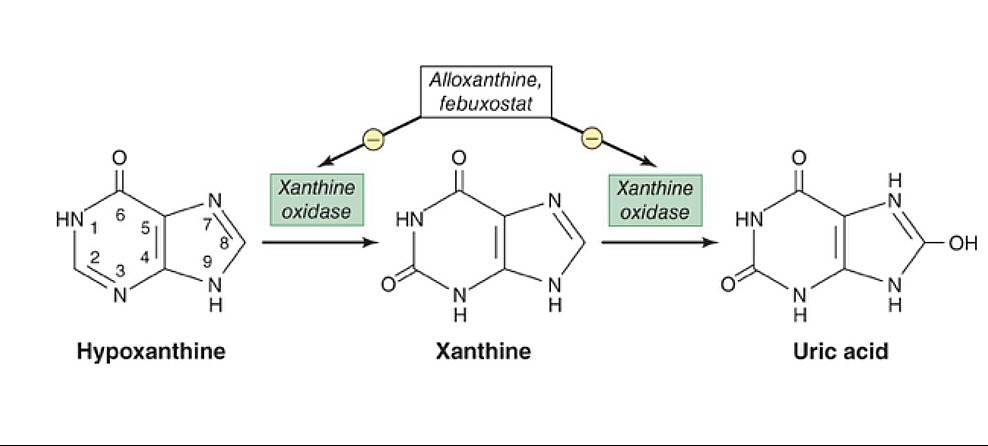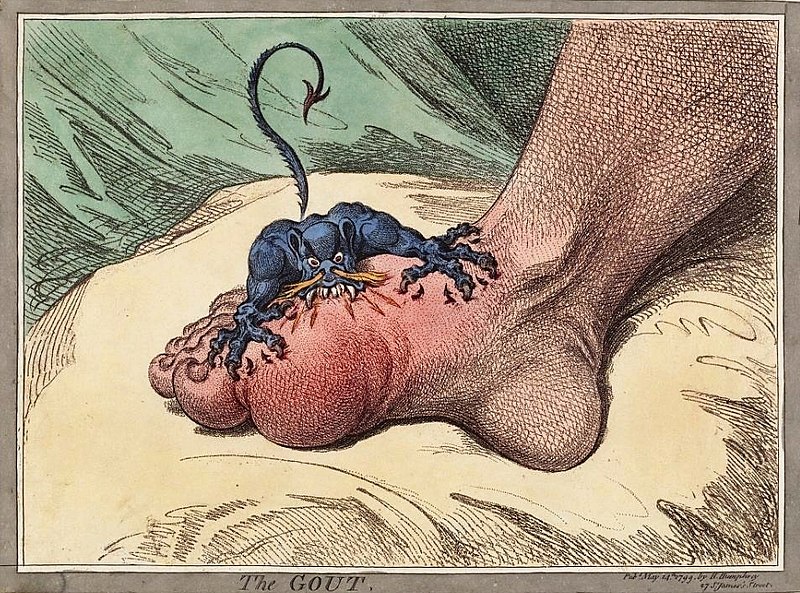Playlist
Show Playlist
Hide Playlist
Quick Review: Gout and Pseudogout
-
Slides Gout.pdf
-
Reference List Rheumatology.pdf
-
Download Lecture Overview
00:01 So with that, let's have a few review questions. 00:04 I'll ask a question, feel free to pause the slides and then come up with the answer yourself before looking to see what our answer is. 00:11 So all of the following can contribute to uric acid crystal formation except: So the answer to this question, think again about the great toe and a patient at around 4 or 5 in the morning. 00:26 So they're gonna have a low pH, somewhat more acidic blood, and therefore more acidic synovial fluid Elevated temperature doesn't sound right. 00:35 People tend to be cooler at night so that's probably gonna be our answer. 00:39 Uric acid concentration. 00:41 If you get dehydrated, your uric acid concentration goes up in the synovial fluid so that's gonna contribute to uric acid crystal formation. 00:48 The presence of arthritis, we didn't talk much about that but in the great toe, there's arthritis there and each little defect in the articular cartilage serves as a nidus for crystal formation and crystal growth. 01:00 So the presence of arthritis will contribute to uric acid crystal formation. 01:04 And then dehydration, like I said. 01:06 so the answer in this case is elevated temperature because it actually low temperatures that's gonna lead to uric acid crystal formation. 01:14 Second question, what are some of the differences that you can recall between gout and pseudogout? So the main differences here is that there are different kinds of crystals. 01:27 Uric Acid crystals versus Calcium Pyrophosphate deposition in the tissues. 01:32 Some of the risk factors are different. 01:34 You're thinking about hyperparathyroidism, and excess iron or hypomagnesemia or phypophosphatemia for pseudogout whereas you went through a whole barrage of things that contribute to gout that ultimately include increased purine metabolism or purine production versus decreased purine excretion. 01:52 The other difference really come down to the long-term management. 01:56 While both of them can be managed with anti-inflammatory medications, Gout you have some medications which can decrease purine synthesis like Allopurinol and you have uricosuric agents Whereas with Pseudogout you don't have those things in your armamentarium. 02:10 So you're kind of stuck just using Colchicine as a medication to try and suppress future flares Next question, all of the following are risk factors for gout except: So we know a high protein diet is, that's why it was called the "disease of kings". 02:29 Estrogen. 02:30 That's one of the factors that we know contributes to the fact that women are less likely to develop gout than men. 02:36 so that's not really a risk factor in fact it prevents gout. 02:40 So I'm pretty sure that's gonna be our answer. 02:42 CKD - clog in the drain, you can't get the uric acid out of your body. 02:47 HIV - by virtue of being a chronic inflammatory disease contributes to increased turnover of cells and therefore increased purine production. 02:55 And then diuretics, which unfortunately inhibit the excretion of uric acid. 03:00 So our answer in this case is clearly estrogen because it promotes uric acid excretion rather than prevents it. 03:07 And with that, I think we're done.
About the Lecture
The lecture Quick Review: Gout and Pseudogout by Stephen Holt, MD, MS is from the course Non-Autoimmune Arthritis.
Included Quiz Questions
Which of the following does NOT contribute to uric acid crystal formation?
- Elevated temperature
- Dehydration
- Low pH
- Underlying arthritis
- Uric acid concentration
Pseudogout is commonly associated with which of the following synovial fluid findings?
- Rhomboid-shaped, positive-birefringence crystals
- Hydroxyapatite crystals
- Rhomboid-shaped, negative-birefringence crystals
- Needle-shaped, positive-birefringence crystals
- Needle-shaped, negative-birefringence crystals
Customer reviews
5,0 of 5 stars
| 5 Stars |
|
5 |
| 4 Stars |
|
0 |
| 3 Stars |
|
0 |
| 2 Stars |
|
0 |
| 1 Star |
|
0 |






